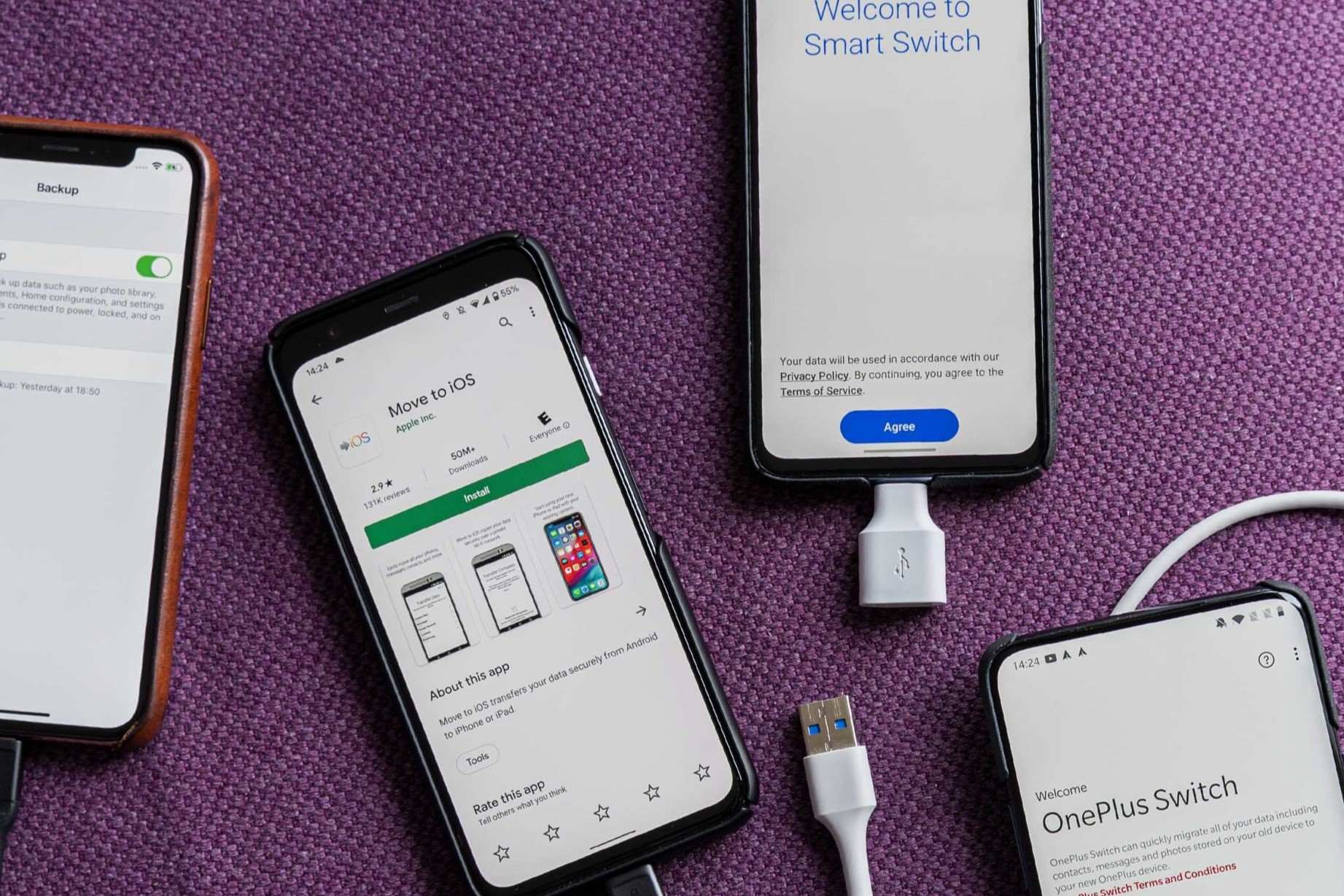
Before You Begin
Backing up data on your iPhone is a crucial first step. This ensures all information is safely stored and can be restored if needed. You can back up your iPhone using iCloud or iTunes.
Backing Up with iCloud
- Go to Settings on your iPhone.
- Tap on [your name] at the top.
- Select iCloud.
- Tap on iCloud Backup.
- Turn on iCloud Backup.
- Tap Back Up Now to start the backup process.
Backing Up with iTunes
- Connect your iPhone to your computer using a USB cable.
- Open iTunes on your computer.
- Select your iPhone from the top left menu.
- Click on Summary.
- Click on Back Up Now to start the backup process.
Method 1: Using Smart Switch for Samsung Users
If switching to a Samsung Android device, the Smart Switch app can transfer your data. Here’s how:
- Back up your iPhone data to iCloud.
- Download the Smart Switch app on your new Samsung phone.
- Open the Smart Switch app and tap on “Receive data.”
- Select iPhone/iPad and then choose “Get data from iCloud instead.”
- Enter your Apple ID and sign in.
- Choose the data you want to move (contacts, messages, photos, etc.) and follow the on-screen instructions to complete the transfer.
Method 2: Using Switch to Android for Google Pixel Users
For those switching to a Google Pixel Android device, the Switch to Android app is particularly useful.
- During the Google Pixel setup process, tap “No Cable?”
- You will see the “Copy Another Way” screen, tap “Ok.”
- Tap “Using an iPhone device.”
- Accept the permission to connect to your other phone and sign in to your Google account.
- Use your iPhone to scan the QR code to download the Switch to Android app.
- Open the app on your iPhone and accept the requests prompting on both phones' screens to confirm.
- When a connection is established, choose what you want to transfer (contacts, calendar events, photos, videos, etc.).
- Wait for it to complete the transfer process.
Method 3: Using Google Drive
Google Drive offers another excellent method for transferring data without using a computer.
- Select the files you want to transfer from your iPhone.
- Share them via email or any other preferred email app.
- On your Android device, open the selected email sharing app and access the files attached.
- You will find the downloaded files in the download folder of your internal storage.
Method 4: Using Dropbox
Dropbox, a cloud-based storage service, allows data transfer from an iPhone to an Android device.
- Choose the desired files from your iPhone.
- Upload them to Dropbox using the Dropbox app on your iPhone.
- Download the files on your Android device using the Dropbox app.
- Access the downloaded files in the download folder of your internal storage.
Method 5: Using Email
Transferring data via email is straightforward but may take longer for larger files.
- Choose the desired files from your iPhone.
- Share them via email or any other preferred email app.
- On your Android device, open the selected email sharing app and access the files attached.
- You will find the downloaded files in the download folder of your internal storage.
Method 6: Using a USB Cable
For a more direct method, use a USB cable to transfer data.
- Connect both phones using a USB cable.
- Power on your new Android phone and tap “Connect the phone to your Wi-Fi network.”
- Choose to copy apps and data from your old device when prompted.
- Select the data (apps, contacts, messages, photos) that you want to transfer.
- Follow the instructions on both devices to complete the transfer.
Method 7: Using Third-Party Software
If other methods don't work, third-party software like Tenorshare iTrango can manually transfer all your data.
- Download and install iTrango on your computer.
- Choose the iPhone to Android feature.
- Connect both devices to your computer using their respective USB cables.
- Grant necessary permissions on both devices by tapping “Trust” on your iPhone and enabling USB debugging on your Android device.
- Select the data types you want to transfer (contacts, messages, photos, videos, music, apps, etc.) or select all.
- Click Start to Transfer to initiate the transfer process.
Ensuring Data Security During Transfer
When transferring data, ensuring the security of your data is paramount. Here are some steps you can take:
- Use Encryption: Encrypt your data before transferring it to protect it from unauthorized access. Use encryption software like Cryptomator, Boxcryptor, or VeraCrypt to encrypt your data on your iPhone and decrypt it on your Android device.
- Transfer Over Secure Networks: Always transfer your data over secure networks such as a trusted Wi-Fi network or a wired connection to prevent data breaches.
Transferring data from an iPhone to an Android device is a straightforward process that can be completed using various methods. Whether you choose to use Smart Switch for Samsung users, Switch to Android for Google Pixel users, Google Drive, Dropbox, email, a USB cable, or third-party software like Tenorshare iTrango, each method has its advantages and disadvantages. By following these steps and ensuring data security during transfer, you can smoothly transition from an iPhone to an Android device without losing any important information.
Backing up your data before starting the transfer process is essential to ensure that all your information is safely stored and can be restored later if needed. With these methods and precautions in place, you can easily transfer all your data from your iPhone to your new Android smartphone.
